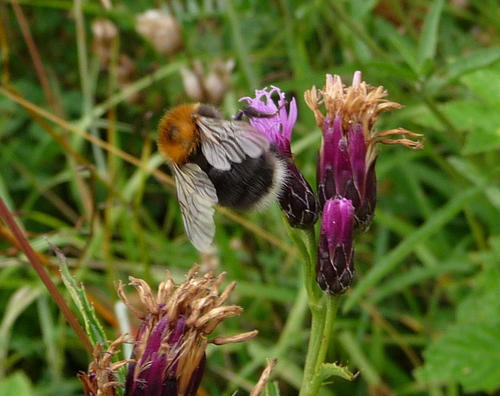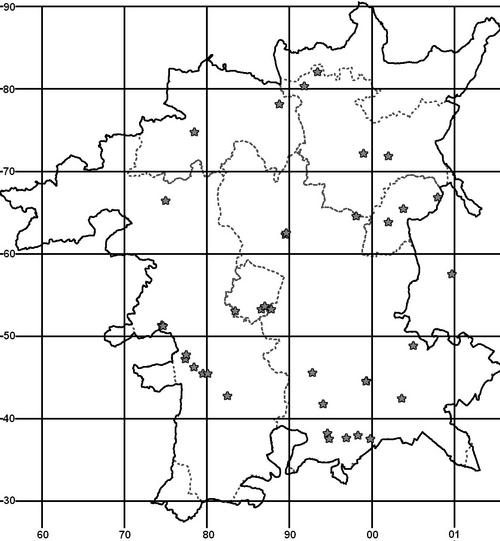The Tree Bumblebee Bombus hypnorum
Geoff Trevis
With most species of bumblebee being in decline and one, Bombus subterraneus, having gone extinct it is interesting to note the arrival and spread of a new species. Bombus hypnorum is not uncommon in Europe where it nests in holes in hollow trees and similar places. It was first recorded in the UK in Hampshire in 2001 since when its spread has been monitored by Stuart Roberts of Reading University. By 2004 two further nests had been reported in the London area and by 2005 it was well established around London. Over the next two years there was a slow spread up the east side of England and by 2007 it had reached north Humberside and there was even one report from Northumberland on the Scottish border. 2008 saw further consolidation in the south-east and a few records were starting to appear from the Midlands. The species is very distinctive having a bright tawny thorax, black abdomen and a strikingly white tail. It is the only species that can be reliably identified from blurred photographs.
The first Worcestershire records came in 2008 from Gary Farmer in Redditch and Alan Baylis in Worcester. There have been sporadic records since and by the end of 2009 there were nine entries on the database. In the summer of 2010 the brave step was taken of putting out a press release calling for observations as a result of which the number of confirmed records has risen to 31. The total number of responses was greater than this but only records either supported by a photograph or from people with a known expertise in bee identification were accepted. Some reports from Malvern, Cleeve Prior, Astwood Bank, Bewdley and Martley could not be verified and were not accepted but could well have been correct. However, the exercise did underline the need for careful verification, even for so distinctive a species, as people’s enthusiasm sometimes overcame their observational skills. We received photographs of Bombus terrestris/lucorum and Bombus lapidarius claiming to be B. hypnorum!
The distribution map shows the situation in Worcestershire at the end of September. There is clearly a south-west bias which would be expected if the spread is from the London area but we must not read too much into this as the relatively small number of data points may not be statistically significant and the bias could be attributable to the distribution of recorders. It will be very interesting to continue monitoring in the coming years and I would urge everybody to be on the look out for the tree bumblebee and to report any sightings of individuals or nests. If possible, include the flowers being used for nectaring and the location of nests. The species has a special liking for nest boxes as these mimic their natural nesting sites.
References
ANON. 2009 Bombus hypnorum in Birmingham. Worcestershire Record. 26 p. 26
FARMER, G. 2008 Bombus hypnorum found in Redditch. Worcestershire Record. 25 p. 7
TREVIS, G. 2009. The tree bumblebee Bombus hypnorum. Worcestershire Record, 27 pp. 22-23

